| View previous topic :: View next topic |
| Author |
Message |
Attila


Joined: 24 Feb 2007
Posts: 57863
Location: Hungary
Expire: 2025-11-18
|
 Posted: Mon Nov 02, 2009 1:04 am Post subject: Posted: Mon Nov 02, 2009 1:04 am Post subject: |
 |
|
Attila wrote:
Thank you as always!
_________________
-------------------------------
Items on sale on Ebay
Sony NEX-7 Carl Zeiss Planar 85mm f1.4, Minolta MD 35mm f1.8, Konica 135mm f2.5, Minolta MD 50mm f1.2, Minolta MD 250mm f5.6, Carl Zeiss Sonnar 180mm f2.8
|
|
| Back to top |
|
 |
Abbazz


Joined: 23 Jun 2007
Posts: 1098
Location: Jakarta
|
 Posted: Mon Nov 02, 2009 12:57 pm Post subject: Monkey see, monkey do Posted: Mon Nov 02, 2009 12:57 pm Post subject: Monkey see, monkey do |
 |
|
Abbazz wrote:
There was a monkey raid on the local market during my lunch break. Fortunately, I was there with the Cooke Kinic. Here's the full report:








Cheers!
Abbazz
_________________
Il n'y a rien dans le monde qui n'ait son moment decisif, et le chef-d'oeuvre de la bonne conduite est de connaitre et de prendre ce moment. - Cardinal de Retz
The 6x9 Photography Online Resource:
http://artbig.com/ |
|
| Back to top |
|
 |
JerryMK

Joined: 16 Apr 2009
Posts: 98
|
 Posted: Mon Nov 02, 2009 10:33 pm Post subject: Posted: Mon Nov 02, 2009 10:33 pm Post subject: |
 |
|
JerryMK wrote:
Wow what a nice serie and great images this Cooke F1.5 produces! Are they shot wide open? |
|
| Back to top |
|
 |
Abbazz


Joined: 23 Jun 2007
Posts: 1098
Location: Jakarta
|
 Posted: Tue Nov 03, 2009 12:07 am Post subject: Posted: Tue Nov 03, 2009 12:07 am Post subject: |
 |
|
Abbazz wrote:
| JerryMK wrote: |
| Wow what a nice serie and great images this Cooke F1.5 produces! Are they shot wide open? |
Thanks Jerry. I am in love with this lens, because I dig the dynamic effect it produces. All the Kinic pictures in this thread were taken wide open, except for the monkey series, where pictures #2 and #6 were taken at F/3.5 and picture #3 at F/5.6. Pictures #2, 6, 7 and 8 were also slightly cropped.
Cheers!
Abbazz
_________________
Il n'y a rien dans le monde qui n'ait son moment decisif, et le chef-d'oeuvre de la bonne conduite est de connaitre et de prendre ce moment. - Cardinal de Retz
The 6x9 Photography Online Resource:
http://artbig.com/ |
|
| Back to top |
|
 |
apicius9


Joined: 03 Nov 2009
Posts: 74
Location: Hawaii
|
 Posted: Tue Nov 03, 2009 7:38 am Post subject: Posted: Tue Nov 03, 2009 7:38 am Post subject: |
 |
|
apicius9 wrote:
Thanks for posting these great pictures - and for the background info on the Kinic lenses. I have an older uncoated one that is currently out for cleaning (with a few others) and seeing your pics, I can't wait to get it back and play. I have tried a few dozen c-mount lenses, and this one really stands out with the swirly bokeh.
Stefan |
|
| Back to top |
|
 |
poilu

Joined: 26 Aug 2007
Posts: 10471
Location: Greece
Expire: 2019-08-29
|
 Posted: Tue Nov 03, 2009 10:14 am Post subject: Posted: Tue Nov 03, 2009 10:14 am Post subject: |
 |
|
poilu wrote:
wow! super monkey Kinic  |
|
| Back to top |
|
 |
Abbazz


Joined: 23 Jun 2007
Posts: 1098
Location: Jakarta
|
 Posted: Tue Nov 03, 2009 12:02 pm Post subject: Pentax 25/1.4 Posted: Tue Nov 03, 2009 12:02 pm Post subject: Pentax 25/1.4 |
 |
|
Abbazz wrote:
Thanks Stefan and Poilu for the kind words, I feel very honored.
Now for a different lens, here are some pictures taken with the Pentax 25/1.4, also in C-Mount. This is a lens for CCTV and video surveillance cameras, which doesn't quite cover the 4/3rds format, leaving some dark corners, even when stopped down. Here's how the image looks like, at F/5.6 and with the default aspect ratio of 4/3:

You can see that there is a very good contrast and that the center of the frame is very sharp (also when the lens is used wide open), but the borders are blurred and the image circle doesn't reach the corners of the frame. By using the 1/1 square aspect ratio, the black corners are cropped away and most of the image becomes sharp:

Same for the 16/9 aspect ratio (wide open):

The bokeh is a bit swirly when shooting close up and wide open, but much more policed than on the Cooke Kinic:

There is also a lot of distortion (F/5.6):

Sometimes, the vignetting can be a real nuisance:

But on some pictures, it is hardly apparent (F/5.6):


Cheers!
Abbazz
_________________
Il n'y a rien dans le monde qui n'ait son moment decisif, et le chef-d'oeuvre de la bonne conduite est de connaitre et de prendre ce moment. - Cardinal de Retz
The 6x9 Photography Online Resource:
http://artbig.com/ |
|
| Back to top |
|
 |
kds315*


Joined: 12 Mar 2008
Posts: 16584
Location: Weinheim, Germany
Expire: 2021-03-09
|
 Posted: Tue Nov 03, 2009 12:46 pm Post subject: Posted: Tue Nov 03, 2009 12:46 pm Post subject: |
 |
|
kds315* wrote:
Well Sebastien,
you with your impressive results were the last thing needed to push me "over the edge" towards trying the mft system - and I got me a Lumix GH1 kit. 
Well now the hunt for good adaptors in on...to see how many of all my lenses can be used on that new system. I expect quite some surprises 
Congrats again to the wonderful presentation here!
_________________
Klaus - Admin
"S'il vient a point, me souviendra" [Thomas Bohier (1460-1523)]
http://www.macrolenses.de for macro and special lens info
http://www.pbase.com/kds315/uv_photos for UV Images and lens/filter info
https://www.flickr.com/photos/kds315/albums my albums using various lenses
http://photographyoftheinvisibleworld.blogspot.com/ my UV BLOG
http://www.travelmeetsfood.com/blog Food + Travel BLOG
https://galeriafotografia.com Architecture + Drone photography
Currently most FAV lens(es):
X80QF f3.2/80mm
Hypergon f11/26mm
ELCAN UV f5.6/52mm
Zeiss UV-Planar f4/60mm
Zeiss UV-Planar f2/62mm
Lomo Уфар-12 f2.5/41mm
Lomo Зуфар-2 f4.0/350mm
Lomo ZIKAR-1A f1.2/100mm
Nikon UV Nikkor f4.5/105mm
Zeiss UV-Sonnar f4.3/105mm
CERCO UV-VIS-NIR f1.8/45mm
CERCO UV-VIS-NIR f4.1/94mm
CERCO UV-VIS-NIR f2.8/100mm
Steinheil Quarzobjektiv f1.8/50mm
Pentax Quartz Takumar f3.5/85mm
Carl Zeiss Jena UV-Objektiv f4/60mm
NYE OPTICAL Lyman-Alpha II f1.1/90mm
NYE OPTICAL Lyman-Alpha I f2.8/200mm
COASTAL OPTICS f4/60mm UV-VIS-IR Apo
COASTAL OPTICS f4.5/105mm UV-Micro-Apo
Pentax Ultra-Achromatic Takumar f4.5/85mm
Pentax Ultra-Achromatic Takumar f5.6/300mm
Rodenstock UV-Rodagon f5.6/60mm + 105mm + 150mm
|
|
| Back to top |
|
 |
Abbazz


Joined: 23 Jun 2007
Posts: 1098
Location: Jakarta
|
 Posted: Tue Nov 03, 2009 1:22 pm Post subject: Posted: Tue Nov 03, 2009 1:22 pm Post subject: |
 |
|
Abbazz wrote:
| kds315* wrote: |
Well Sebastien,
you with your impressive results were the last thing needed to push me "over the edge" towards trying the mft system - and I got me a Lumix GH1 kit. 
Well now the hunt for good adaptors in on...to see how many of all my lenses can be used on that new system. I expect quite some surprises 
Congrats again to the wonderful presentation here! |
Klaus, you know as well as me that you needed this camera. 
Please report your findings regarding the huge pile of lenses you're sitting on.
Cheers!
Abbazz
_________________
Il n'y a rien dans le monde qui n'ait son moment decisif, et le chef-d'oeuvre de la bonne conduite est de connaitre et de prendre ce moment. - Cardinal de Retz
The 6x9 Photography Online Resource:
http://artbig.com/ |
|
| Back to top |
|
 |
kds315*


Joined: 12 Mar 2008
Posts: 16584
Location: Weinheim, Germany
Expire: 2021-03-09
|
 Posted: Tue Nov 03, 2009 3:17 pm Post subject: Posted: Tue Nov 03, 2009 3:17 pm Post subject: |
 |
|
kds315* wrote:
Thanks Sebastien for that "confirmation" - I needed that!! 
Sure will I report about my findings, sourcing good adaptors right now.
Which c-mount adaptors could you recommend? There seem to be different ones on the market.
_________________
Klaus - Admin
"S'il vient a point, me souviendra" [Thomas Bohier (1460-1523)]
http://www.macrolenses.de for macro and special lens info
http://www.pbase.com/kds315/uv_photos for UV Images and lens/filter info
https://www.flickr.com/photos/kds315/albums my albums using various lenses
http://photographyoftheinvisibleworld.blogspot.com/ my UV BLOG
http://www.travelmeetsfood.com/blog Food + Travel BLOG
https://galeriafotografia.com Architecture + Drone photography
Currently most FAV lens(es):
X80QF f3.2/80mm
Hypergon f11/26mm
ELCAN UV f5.6/52mm
Zeiss UV-Planar f4/60mm
Zeiss UV-Planar f2/62mm
Lomo Уфар-12 f2.5/41mm
Lomo Зуфар-2 f4.0/350mm
Lomo ZIKAR-1A f1.2/100mm
Nikon UV Nikkor f4.5/105mm
Zeiss UV-Sonnar f4.3/105mm
CERCO UV-VIS-NIR f1.8/45mm
CERCO UV-VIS-NIR f4.1/94mm
CERCO UV-VIS-NIR f2.8/100mm
Steinheil Quarzobjektiv f1.8/50mm
Pentax Quartz Takumar f3.5/85mm
Carl Zeiss Jena UV-Objektiv f4/60mm
NYE OPTICAL Lyman-Alpha II f1.1/90mm
NYE OPTICAL Lyman-Alpha I f2.8/200mm
COASTAL OPTICS f4/60mm UV-VIS-IR Apo
COASTAL OPTICS f4.5/105mm UV-Micro-Apo
Pentax Ultra-Achromatic Takumar f4.5/85mm
Pentax Ultra-Achromatic Takumar f5.6/300mm
Rodenstock UV-Rodagon f5.6/60mm + 105mm + 150mm
|
|
| Back to top |
|
 |
cheesegears
Joined: 16 Feb 2009
Posts: 15
|
 Posted: Tue Nov 03, 2009 10:28 pm Post subject: Posted: Tue Nov 03, 2009 10:28 pm Post subject: |
 |
|
cheesegears wrote:
| Abbazz wrote: |
| cheesegears wrote: |
Abbazz,
The first set of photos made me a bit dizzy.
I like the portraits, though. Very strong.
Is it possible to put D mount lenses on this (or similar) cameras?
I have some D mount Kern Paillard and Som Berthiot 8mm cine lenses. |
Thanks for your comments cheesegears. It seems difficult to put a D mount lens on a Micro 4/3rds camera for two reasons. First, because the image circle (diagonal) of a 8mm movie picture is 5.94mm, while it is 21.63mm for Micro 4/3rds, meaning that these lenses will usually not cover the bigger format, leading to a small circular image on a black background. Second, because the registration distance (flange focal distance) is 20mm on a Micro 4/3rds camera and only 12.29mm on a D mount lens, meaning the adapter would need to have a part protruding 7.71mm into the camera, dangerously close to the shutter assembly.
Cheers!
Abbazz |
Abbazz,
Much obliged for your thorough explanation. Pity those 8mm can't be used. They're small and light. Take up no space at all.
Cheesegears
PS I like monkey shot 4 by the way (circular effect with monkey in middle) |
|
| Back to top |
|
 |
Abbazz


Joined: 23 Jun 2007
Posts: 1098
Location: Jakarta
|
 Posted: Thu Nov 05, 2009 2:06 pm Post subject: Posted: Thu Nov 05, 2009 2:06 pm Post subject: |
 |
|
Abbazz wrote:
| cheesegears wrote: |
| I like monkey shot 4 by the way (circular effect with monkey in middle) |
This circular effect is present in many old lenses, especially when shooting wide open a subject at minimum distance against a more distant background. Here are a few pictures taken with an uncoated Leitz Summar from 1936:
F/2.0
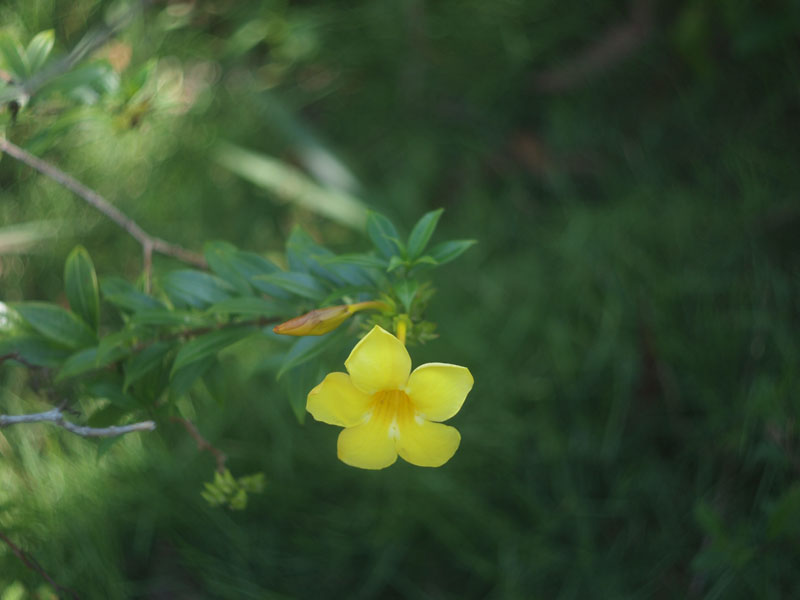
F/2.0
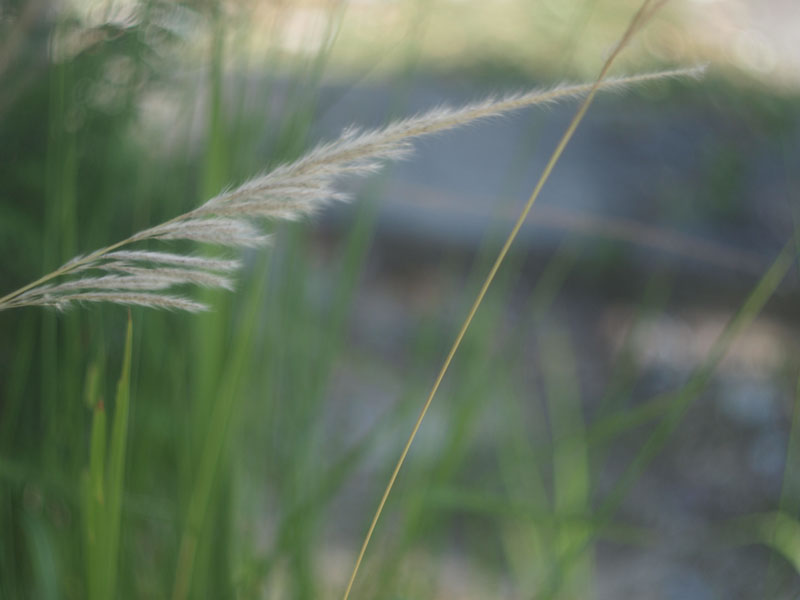
F/2.0

F/2.0

The 50/2 Summar is the first double Gauss lens engineered by Max Berek for Leitz. It was sharper than the archrival Zeiss Sonnar, but had a lower contrast and was more prone to flare, because it had had more glass-air surfaces than the Sonnar formula, and this was a big drawback at a time when lens coatings were not available. Nowadays, the low contrast and muted colors can easily be corrected in post production, but it is not always suitable to do so, because low contrast might be a good point in order to accommodate the rather limited dynamic range of digital imagers. The muted colors and lower contrast can also lead to pleasing results for portrait photography:
F/2.0

F/2.0
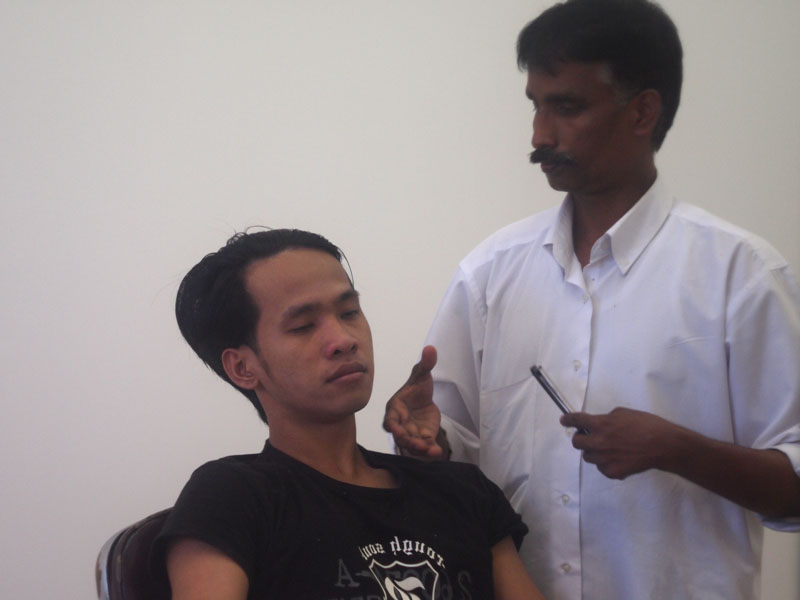
When used for landscape, it's better to close the diaphragm quite a bit, because wide open the borders were not so sharp, as with most of the fast lenses of that time:
F/2.0

F/5.6

F/5.6
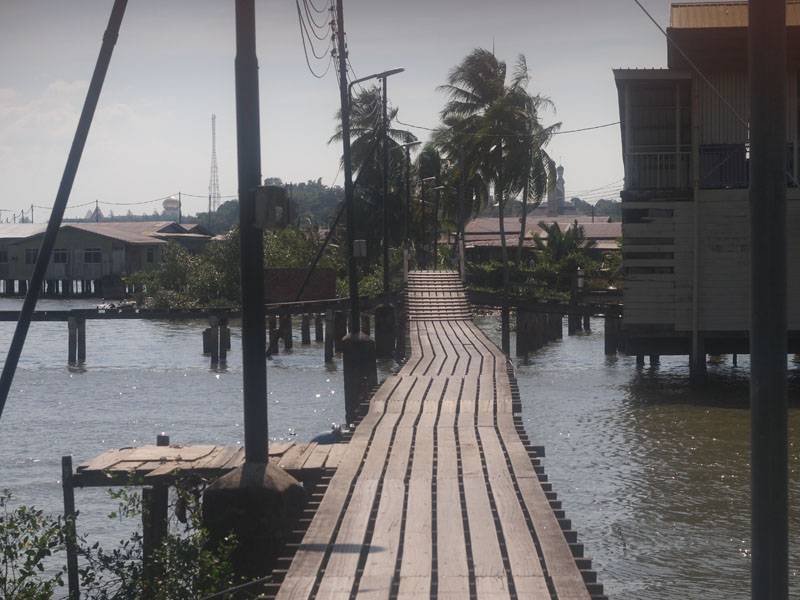
Cheers!
Abbazz
_________________
Il n'y a rien dans le monde qui n'ait son moment decisif, et le chef-d'oeuvre de la bonne conduite est de connaitre et de prendre ce moment. - Cardinal de Retz
The 6x9 Photography Online Resource:
http://artbig.com/ |
|
| Back to top |
|
 |
kds315*


Joined: 12 Mar 2008
Posts: 16584
Location: Weinheim, Germany
Expire: 2021-03-09
|
 Posted: Sun Nov 08, 2009 11:40 am Post subject: Posted: Sun Nov 08, 2009 11:40 am Post subject: |
 |
|
kds315* wrote:
I just got a nice 1" Cooke KINIC (Petzval design) lens for my GH1, too.
Thanks Sebastien for bringing that to our attention!
_________________
Klaus - Admin
"S'il vient a point, me souviendra" [Thomas Bohier (1460-1523)]
http://www.macrolenses.de for macro and special lens info
http://www.pbase.com/kds315/uv_photos for UV Images and lens/filter info
https://www.flickr.com/photos/kds315/albums my albums using various lenses
http://photographyoftheinvisibleworld.blogspot.com/ my UV BLOG
http://www.travelmeetsfood.com/blog Food + Travel BLOG
https://galeriafotografia.com Architecture + Drone photography
Currently most FAV lens(es):
X80QF f3.2/80mm
Hypergon f11/26mm
ELCAN UV f5.6/52mm
Zeiss UV-Planar f4/60mm
Zeiss UV-Planar f2/62mm
Lomo Уфар-12 f2.5/41mm
Lomo Зуфар-2 f4.0/350mm
Lomo ZIKAR-1A f1.2/100mm
Nikon UV Nikkor f4.5/105mm
Zeiss UV-Sonnar f4.3/105mm
CERCO UV-VIS-NIR f1.8/45mm
CERCO UV-VIS-NIR f4.1/94mm
CERCO UV-VIS-NIR f2.8/100mm
Steinheil Quarzobjektiv f1.8/50mm
Pentax Quartz Takumar f3.5/85mm
Carl Zeiss Jena UV-Objektiv f4/60mm
NYE OPTICAL Lyman-Alpha II f1.1/90mm
NYE OPTICAL Lyman-Alpha I f2.8/200mm
COASTAL OPTICS f4/60mm UV-VIS-IR Apo
COASTAL OPTICS f4.5/105mm UV-Micro-Apo
Pentax Ultra-Achromatic Takumar f4.5/85mm
Pentax Ultra-Achromatic Takumar f5.6/300mm
Rodenstock UV-Rodagon f5.6/60mm + 105mm + 150mm
|
|
| Back to top |
|
 |
LucisPictor


Joined: 26 Feb 2007
Posts: 17633
Location: Oberhessen, Germany / Maidstone ('95-'96)
Expire: 2013-12-03
|
 Posted: Sun Nov 08, 2009 12:03 pm Post subject: Posted: Sun Nov 08, 2009 12:03 pm Post subject: |
 |
|
LucisPictor wrote:
| kds315* wrote: |
... and I got me a Lumix GH1 kit. 
|
Wow! Congrats, Klaus. I would love to get this one as well, with the 1.7/20. But there is no budget at the moment. 
_________________
Personal forum activity on pause every now and again (due to job obligations)!
Carsten, former Moderator 
Things ON SALE
Carsten = "KAPCTEH" = "Karusutenu" | T-shirt?.........................My photos from Emilia: http://www.schouler.net/emilia/emilia2011.html
My gear: http://retrocameracs.wordpress.com/ausrustung/
Old list: http://forum.mflenses.com/viewtopic.php?t=65 (Not up-to-date, sorry!) | http://www.lucispictor.de | http://www.alensaweek.wordpress.com |
http://www.retrocamera.de |
|
| Back to top |
|
 |
Abbazz


Joined: 23 Jun 2007
Posts: 1098
Location: Jakarta
|
 Posted: Sun Nov 08, 2009 12:32 pm Post subject: Posted: Sun Nov 08, 2009 12:32 pm Post subject: |
 |
|
Abbazz wrote:
| kds315* wrote: |
I just got a nice 1" Cooke KINIC (Petzval design) lens for my GH1, too.
Thanks Sebastien for bringing that to our attention! |
You're welcome, Klaus. Congrats on the purchase, I hope you will enjoy using yours as much as I enjoy mine!
Cheers!
Abbazz
_________________
Il n'y a rien dans le monde qui n'ait son moment decisif, et le chef-d'oeuvre de la bonne conduite est de connaitre et de prendre ce moment. - Cardinal de Retz
The 6x9 Photography Online Resource:
http://artbig.com/ |
|
| Back to top |
|
 |
Abbazz


Joined: 23 Jun 2007
Posts: 1098
Location: Jakarta
|
 Posted: Mon Nov 09, 2009 12:56 am Post subject: Olympus Pen Zuiko 42/1.2 Posted: Mon Nov 09, 2009 12:56 am Post subject: Olympus Pen Zuiko 42/1.2 |
 |
|
Abbazz wrote:
Olympus has christened its new E-P1 "Pen" but, before being a marketing gimmick, the Pen was a wonderful half frame point-and-shoot camera launched in 1959. This cheap little camera was an instant success, leading Olympus to develop the concept over the years. The most famous camera in the series, the Pen-F, launched in 1963, was an original half-frame SLR -- at that time, Olympus qualified it of "Single Frame Camera," by reference to the 35mm movie image size, which caused the Leica at its debuts to be called a "double frame" camera. The Pen-F had many unheard features, including a rotating blade shutter offering full flash synch up to 1/500 sec. and a Porro mirror viewfinder.
This incredible camera also had incredible lenses. The Zuiko lenses developed for the Pen series were great lenses, which all had a very good optical quality, a sturdy construction with smooth operating rings and were also capable of focusing very close. As the image circle required for half frame was smaller than for full frame 35mm, the Pen lenses were more compact than their 35mm counterparts.
For example, the fast normal 42mm F/1.2 was about half the size and weight of the comparable Canon F/1.2 lens. Here it is, mounted on the diminutive E-P1:

This lens, although being soft and having a low contrast when used wide open and being very sensitive to flare when highlights are present, is very sharp and has a rather pleasant bokeh. On a Micro 4/3rds camera, it becomes an useful 84mm portrait lens. As softness is a quality in portrait photography and contrast is very easy to enhance in post production, this lens has become one of the most sought after portrait lenses for the Micro-4/3 cameras.
Here are a few pictures taken with this lens, first, wide open:








Then, at F/5.6:





Cheers!
Abbazz
_________________
Il n'y a rien dans le monde qui n'ait son moment decisif, et le chef-d'oeuvre de la bonne conduite est de connaitre et de prendre ce moment. - Cardinal de Retz
The 6x9 Photography Online Resource:
http://artbig.com/ |
|
| Back to top |
|
 |
Abbazz


Joined: 23 Jun 2007
Posts: 1098
Location: Jakarta
|
 Posted: Mon Nov 09, 2009 3:38 pm Post subject: Leitz Summitar 50/2 Posted: Mon Nov 09, 2009 3:38 pm Post subject: Leitz Summitar 50/2 |
 |
|
Abbazz wrote:
The Summitar, launched in 1939, was a development of the optical formula of the 1933 Summar, with an additional element and a larger diameter front group in order to reduce vignetting. The bokeh of the Summitar is a bit less nervous than the Summar's but the Summitar will still exhibit some swirly highlights occasionally. The newer lens is also less sensitive to flare than its predecessor and vignettes less wide open. Sharpness is in the same ballpark IMHO, which means the Summitar is no Summicron.
Here are a few pictures taken with the Summitar, mostly wide open and converted to black and white, with some toning/grain/vignetting added in post processing:










Cheers!
Abbazz
_________________
Il n'y a rien dans le monde qui n'ait son moment decisif, et le chef-d'oeuvre de la bonne conduite est de connaitre et de prendre ce moment. - Cardinal de Retz
The 6x9 Photography Online Resource:
http://artbig.com/ |
|
| Back to top |
|
 |
LucisPictor


Joined: 26 Feb 2007
Posts: 17633
Location: Oberhessen, Germany / Maidstone ('95-'96)
Expire: 2013-12-03
|
 Posted: Mon Nov 09, 2009 3:51 pm Post subject: Posted: Mon Nov 09, 2009 3:51 pm Post subject: |
 |
|
LucisPictor wrote:
Abbazz, these b/w shots are amazing.
I want to have a GF1!!!  But �1000,- ??? But �1000,- ??? 
_________________
Personal forum activity on pause every now and again (due to job obligations)!
Carsten, former Moderator 
Things ON SALE
Carsten = "KAPCTEH" = "Karusutenu" | T-shirt?.........................My photos from Emilia: http://www.schouler.net/emilia/emilia2011.html
My gear: http://retrocameracs.wordpress.com/ausrustung/
Old list: http://forum.mflenses.com/viewtopic.php?t=65 (Not up-to-date, sorry!) | http://www.lucispictor.de | http://www.alensaweek.wordpress.com |
http://www.retrocamera.de |
|
| Back to top |
|
 |
kds315*


Joined: 12 Mar 2008
Posts: 16584
Location: Weinheim, Germany
Expire: 2021-03-09
|
 Posted: Mon Nov 09, 2009 4:07 pm Post subject: Posted: Mon Nov 09, 2009 4:07 pm Post subject: |
 |
|
kds315* wrote:
I really like the b/w toned shots Sebastien! very nice series
of shots!
_________________
Klaus - Admin
"S'il vient a point, me souviendra" [Thomas Bohier (1460-1523)]
http://www.macrolenses.de for macro and special lens info
http://www.pbase.com/kds315/uv_photos for UV Images and lens/filter info
https://www.flickr.com/photos/kds315/albums my albums using various lenses
http://photographyoftheinvisibleworld.blogspot.com/ my UV BLOG
http://www.travelmeetsfood.com/blog Food + Travel BLOG
https://galeriafotografia.com Architecture + Drone photography
Currently most FAV lens(es):
X80QF f3.2/80mm
Hypergon f11/26mm
ELCAN UV f5.6/52mm
Zeiss UV-Planar f4/60mm
Zeiss UV-Planar f2/62mm
Lomo Уфар-12 f2.5/41mm
Lomo Зуфар-2 f4.0/350mm
Lomo ZIKAR-1A f1.2/100mm
Nikon UV Nikkor f4.5/105mm
Zeiss UV-Sonnar f4.3/105mm
CERCO UV-VIS-NIR f1.8/45mm
CERCO UV-VIS-NIR f4.1/94mm
CERCO UV-VIS-NIR f2.8/100mm
Steinheil Quarzobjektiv f1.8/50mm
Pentax Quartz Takumar f3.5/85mm
Carl Zeiss Jena UV-Objektiv f4/60mm
NYE OPTICAL Lyman-Alpha II f1.1/90mm
NYE OPTICAL Lyman-Alpha I f2.8/200mm
COASTAL OPTICS f4/60mm UV-VIS-IR Apo
COASTAL OPTICS f4.5/105mm UV-Micro-Apo
Pentax Ultra-Achromatic Takumar f4.5/85mm
Pentax Ultra-Achromatic Takumar f5.6/300mm
Rodenstock UV-Rodagon f5.6/60mm + 105mm + 150mm
|
|
| Back to top |
|
 |
Abbazz


Joined: 23 Jun 2007
Posts: 1098
Location: Jakarta
|
 Posted: Mon Nov 09, 2009 10:59 pm Post subject: Posted: Mon Nov 09, 2009 10:59 pm Post subject: |
 |
|
Abbazz wrote:
Thank you Klaus for the kind words.
| LucisPictor wrote: |
Abbazz, these b/w shots are amazing.
I want to have a GF1!!!  But �1000,- ??? But �1000,- ???  |
Thanks Carsten. The Olympus E-P1 is priced at $799 and now that the E-P2 is announced, its price will likely go down soon...
Cheers!
Abbazz
_________________
Il n'y a rien dans le monde qui n'ait son moment decisif, et le chef-d'oeuvre de la bonne conduite est de connaitre et de prendre ce moment. - Cardinal de Retz
The 6x9 Photography Online Resource:
http://artbig.com/ |
|
| Back to top |
|
 |
apicius9


Joined: 03 Nov 2009
Posts: 74
Location: Hawaii
|
 Posted: Thu Nov 19, 2009 8:04 am Post subject: Posted: Thu Nov 19, 2009 8:04 am Post subject: |
 |
|
apicius9 wrote:
A bit late to the party, but here is another dizzying Cooke Kinic 25/1.5 shot with the G1, fully open. This is the older uncoated version. I love this lens.
BTW, Sebastien, I love the b&w shots with the old Leica lenses. I was born in Wetzlar where the original company seat was and half my family worked for Leitz/Leica at some time or another, I would love to get my hands on some of the old lenses.
Stefan
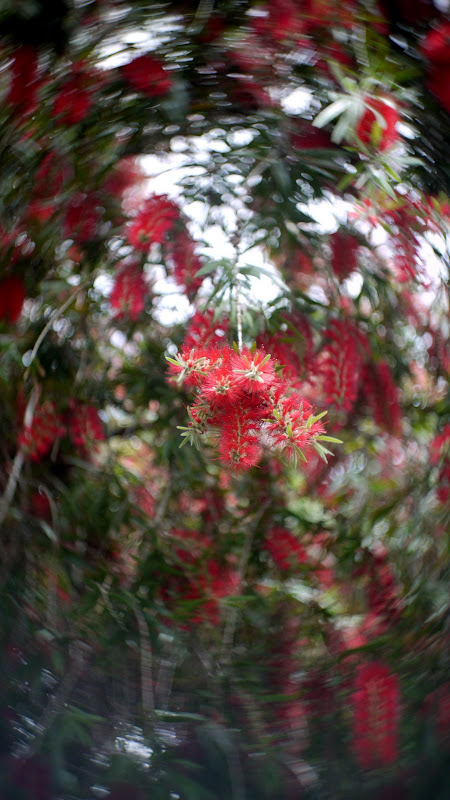 |
|
| Back to top |
|
 |
JerryMK

Joined: 16 Apr 2009
Posts: 98
|
 Posted: Thu Nov 19, 2009 5:12 pm Post subject: Posted: Thu Nov 19, 2009 5:12 pm Post subject: |
 |
|
JerryMK wrote:
Very nice shot. I wonder but never seen explained, What causes the effect of a swirley bokeh? |
|
| Back to top |
|
 |
Abbazz


Joined: 23 Jun 2007
Posts: 1098
Location: Jakarta
|
 Posted: Fri Nov 20, 2009 12:40 am Post subject: Posted: Fri Nov 20, 2009 12:40 am Post subject: |
 |
|
Abbazz wrote:
| JerryMK wrote: |
| Very nice shot. I wonder but never seen explained, What causes the effect of a swirley bokeh? |
The swirls are caused primarily by uncorrected astigmatism. Petzval lenses are famous for that. Many fast Double Gauss lenses also exhibit the swirly bokeh. Optical vignetting (the cat's eye shaped highlights near the borders of the frame) also increases the effect.
Cheers!
Abbazz
_________________
Il n'y a rien dans le monde qui n'ait son moment decisif, et le chef-d'oeuvre de la bonne conduite est de connaitre et de prendre ce moment. - Cardinal de Retz
The 6x9 Photography Online Resource:
http://artbig.com/ |
|
| Back to top |
|
 |
Abbazz


Joined: 23 Jun 2007
Posts: 1098
Location: Jakarta
|
 Posted: Sun Nov 22, 2009 1:28 am Post subject: Posted: Sun Nov 22, 2009 1:28 am Post subject: |
 |
|
Abbazz wrote:
I just got a PM from user rbelyell asking a few questions about C-mount lenses. As I think the answer may be of interest to others, I'd better post it here. This way, the whole MFLenses community may also be able to contribute or to correct any error in my post.
| rbelyell wrote: |
as you know the x2 crop factor wreaks havoc with the lens collection. to take advantage both of ep2 low light capabiity and small form factor i want to get a fast small not expensive lens that is sharp as well. i thought c mount lenses might fit the bill, but i know even less about them than about m42. i have come across some inexpensive 16mm 1.3 comsicar lenses, also javelin, vicor and bolex.
are these good lenses? is there any thing i should look out for to accomplish what i want--for ex i notice some are labeled 1/2" format some 1" format, and i dont even know what that means. |
C-mount lenses were initially used for motion picture cameras, especially in 16mm format. Now, they are still produced for video surveillance cameras (CCTV). It is important to know that a 16mm cinema image has a diagonal of 14mm, while an 1 inch video tube or sensor has a diagonal of 15.5mm (a lot less than one inch!) and a 1/2 inch sensor has a diagonal of only 8mm. On the other hand, a 4/3rds sensor has a diagonal of more than 21mm (if you want some explanations on sensor sizes, please refer to this very good page by Vincent Bockaert on DPReview).
So it is reasonable to think that almost every C-mount lens under the sun has been designed to deliver an image circle measuring less than 16mm in diameter. When we try to use it on a 4/3rds camera requiring a 22mm image circle to cover the whole sensor, then we are running into some problems: blurred edges, dark corners, or even circular image with a thick black border. These problems are much more apparent on wide angles than on long focal lenses, because the longer lenses have usually a larger image circle.
As a rule of thumb, 25mm (1") is the limit. Lenses having a focal length shorter than 25mm exhibit vignetting and edge softness, while lenses above 25mm are more or less free of these defects. As for 25mm lenses, some have dark corners while other illuminate the whole 4/3rds sensor but illuminate does not always mean cover: there is light reaching the corners of the sensor but the image can be very mushy. Usually, very fast lenses (0.95) have a worse coverage than slower lenses. This table summarizes lens coverage for many popular C-mount lenses. Every lens noted as full>22mm will at least illuminate the whole 4/3rds sensor.
To get back to your questions, I don't think a 16mm Cosmicar -- or any other C-mount lens having that focal length that I am aware of -- will cover the 4/3rds sensor. Even for 25mm -- which is by no means a wide angle on 4/3rds format -- the coverage is usually not very good and most lenses are best used for special effects only. You also have to keep in mind that many of these lenses were designed to be mounted in front of a video camera which definition doesn't exceed a few hundred lines. They are indeed very good at providing that old fashioned look, but don't expect them to outperform the kit zoom at medium range or the new Panasonic 20/1.7 lens.
I you want to buy C-mount lenses, try to avoid the current madness on eBay. I see people paying more than $500 for lenses that are unusable on a 4/3rds camera without intensive modifications because their barrel is too wide. Don't forget that some of these c-mount lenses are also available new from CCTV retailers (or from B&H), and usually for less money than they go for on eBay. Old cin� lenses are plenty and can be bought for cheap when attached to obsolete motion picture cameras. These cameras are common at garage sales and they typically sell for next to nothing.
Some good reading about C-mount lenses:
- Arthur Cox, Photographic Optics, Focal Press, London -- Mr. Cox was a lens designer working for Taylor, Taylor and Hobson and there are a few comprehensive tables at the end of the book listing most common c-mount lenses.
- Liste des 193 Objectifs monture c -- a good web site in French with lots of image samples.
Cheers!
Abbazz
_________________
Il n'y a rien dans le monde qui n'ait son moment decisif, et le chef-d'oeuvre de la bonne conduite est de connaitre et de prendre ce moment. - Cardinal de Retz
The 6x9 Photography Online Resource:
http://artbig.com/ |
|
| Back to top |
|
 |
apicius9


Joined: 03 Nov 2009
Posts: 74
Location: Hawaii
|
 Posted: Tue Nov 24, 2009 8:45 am Post subject: Posted: Tue Nov 24, 2009 8:45 am Post subject: |
 |
|
apicius9 wrote:
Excellent summary Sebastien! I was fortunate enough to get my hands on a larger lot of c-mount lenses, just before the prices went totally bananas, and fully agree that 25mm is the cut-off point. Some wider lenses are not bad if you crop out the center part of the picture, but, of course, then they are not really wide angles anymore... It is fun to play with these lenses if you get them for a reasonable price, but I have started reselling most of the wide ones in the meantime, planning to keep only a few that I like for their unique effects (like the Cooke Kinic) or the few that at least show good illumination (and almost coverage) and bring additional benefits, like the Angenieux M1 25/0.95. If you don't mind me linking to my own post on getdpi, I did a quick and dirty comparison between some 25mm c-mount lenses reg. sensor coverage and vignetting here: http://forum.getdpi.com/forum/showthread.php?t=8410 . Not all lenses were optimally clean and the light was awkward, but you get an idea about the usefulness. Sometimes a bit of vignetting in the corners can add to a picture IMHO, but in many cases it may be just distracting.
That said, there are some excellent longer c-mount lenses out there that make very nice, very small and very light primes. This definitely includes the Kern-Paillards. They have gone up in price quite a bit but you may still find a 75/2.8 Yvar lens for a reasonable price. I find that the Schneider c-mounts are underrated on ebay, and the 150mm and 100mm tele-xenotars are excellent lenses - a bit heavier because of the metal construction, but still small compared to other lenses of that length. The old Kodak cine lenses also have quite a bit of charme, especially the 63/2 is great on the m4/3 system (well, on my G1 at least). The 40/1.6 and the 50/1.6 cine Ektars are also nice, but the 40mm is hard to find. The 50mm even has a macro mode which supposedly works very nicely - ask me again in a few weeks when mine comes back from servicing... My overall favorite, so far, is the Kern Switar 75/1.9 macro, but I wouldn't buy it anymore for the current prices, you pay less for a Summicron 90/2 these days 
Sorry, I have been spending more time shopping for lenses than taking pictures recently and my job is crazy right now, but I'll try to find a few pics to upload...
Stefan |
|
| Back to top |
|
 |
|
|
